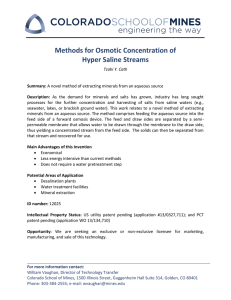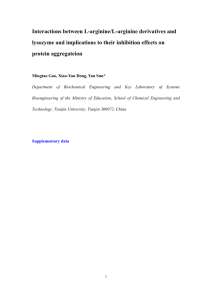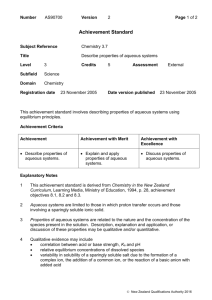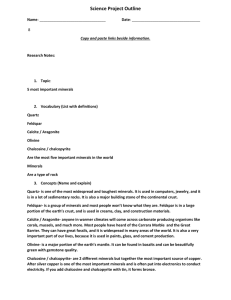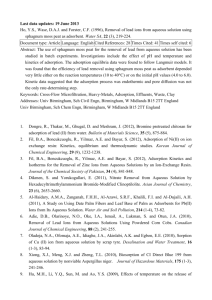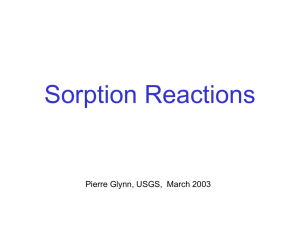Material properties and microstructure from
advertisement
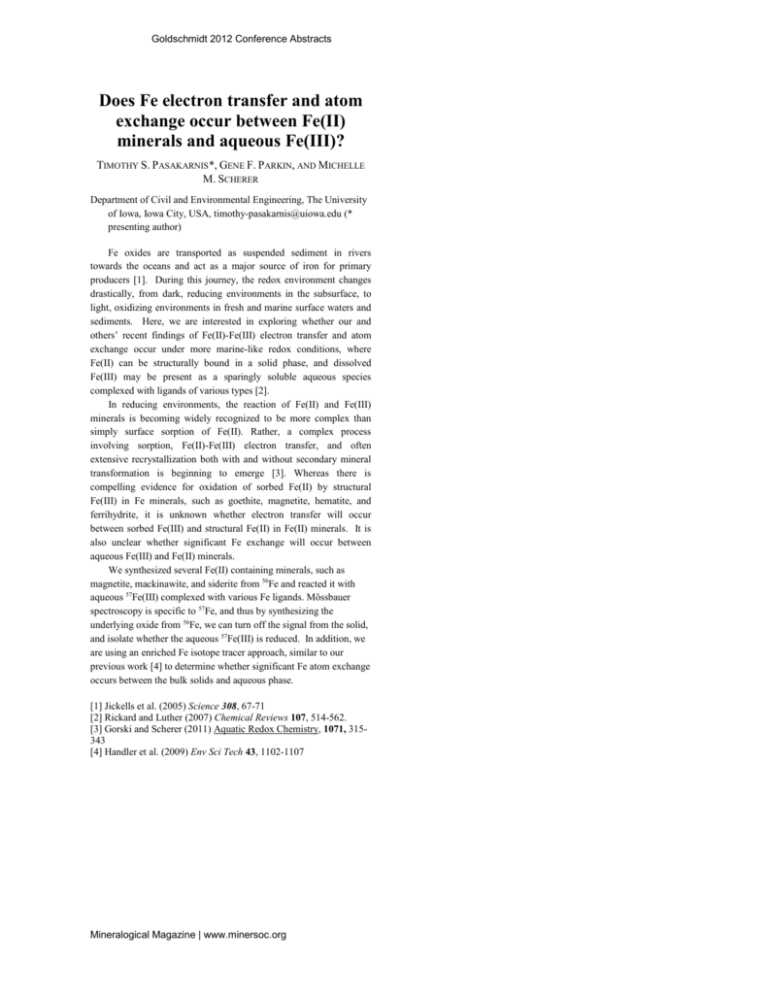
Goldschmidt 2012 Conference Abstracts Does Fe electron transfer and atom exchange occur between Fe(II) minerals and aqueous Fe(III)? TIMOTHY S. PASAKARNIS*, GENE F. PARKIN, AND MICHELLE M. SCHERER Department of Civil and Environmental Engineering, The University of Iowa, Iowa City, USA, timothy-pasakarnis@uiowa.edu (* presenting author) Fe oxides are transported as suspended sediment in rivers towards the oceans and act as a major source of iron for primary producers [1]. During this journey, the redox environment changes drastically, from dark, reducing environments in the subsurface, to light, oxidizing environments in fresh and marine surface waters and sediments. Here, we are interested in exploring whether our and others’ recent findings of Fe(II)-Fe(III) electron transfer and atom exchange occur under more marine-like redox conditions, where Fe(II) can be structurally bound in a solid phase, and dissolved Fe(III) may be present as a sparingly soluble aqueous species complexed with ligands of various types [2]. In reducing environments, the reaction of Fe(II) and Fe(III) minerals is becoming widely recognized to be more complex than simply surface sorption of Fe(II). Rather, a complex process involving sorption, Fe(II)-Fe(III) electron transfer, and often extensive recrystallization both with and without secondary mineral transformation is beginning to emerge [3]. Whereas there is compelling evidence for oxidation of sorbed Fe(II) by structural Fe(III) in Fe minerals, such as goethite, magnetite, hematite, and ferrihydrite, it is unknown whether electron transfer will occur between sorbed Fe(III) and structural Fe(II) in Fe(II) minerals. It is also unclear whether significant Fe exchange will occur between aqueous Fe(III) and Fe(II) minerals. We synthesized several Fe(II) containing minerals, such as magnetite, mackinawite, and siderite from 56Fe and reacted it with aqueous 57Fe(III) complexed with various Fe ligands. Mössbauer spectroscopy is specific to 57Fe, and thus by synthesizing the underlying oxide from 56Fe, we can turn off the signal from the solid, and isolate whether the aqueous 57Fe(III) is reduced. In addition, we are using an enriched Fe isotope tracer approach, similar to our previous work [4] to determine whether significant Fe atom exchange occurs between the bulk solids and aqueous phase. [1] Jickells et al. (2005) Science 308, 67-71 [2] Rickard and Luther (2007) Chemical Reviews 107, 514-562. [3] Gorski and Scherer (2011) Aquatic Redox Chemistry, 1071, 315343 [4] Handler et al. (2009) Env Sci Tech 43, 1102-1107 Mineralogical Magazine | www.minersoc.org
